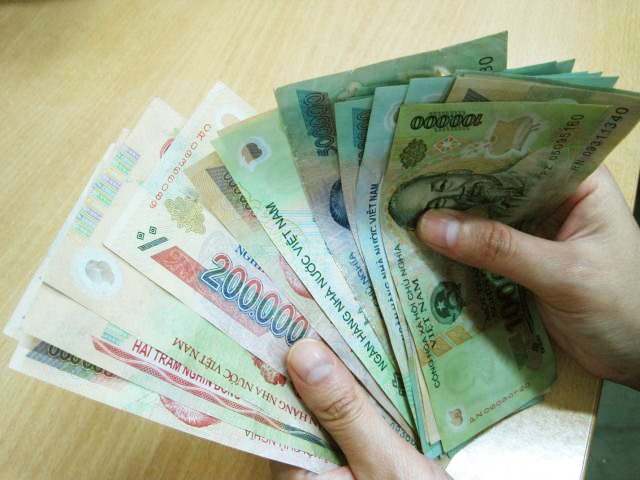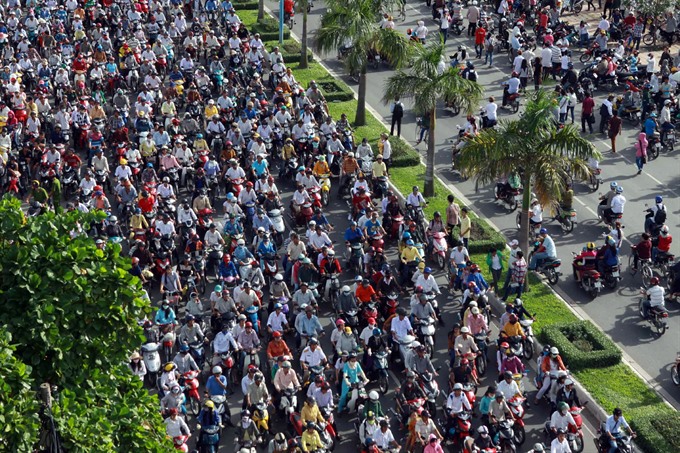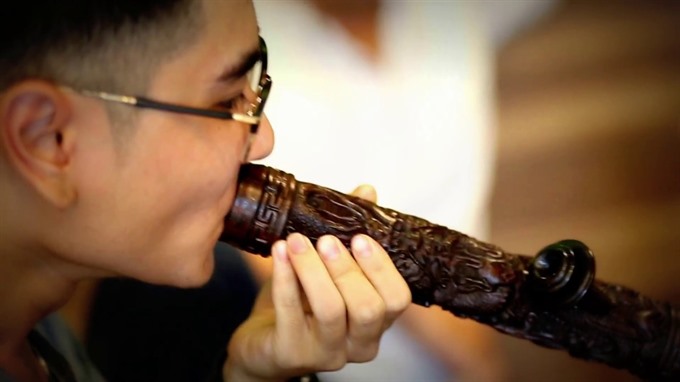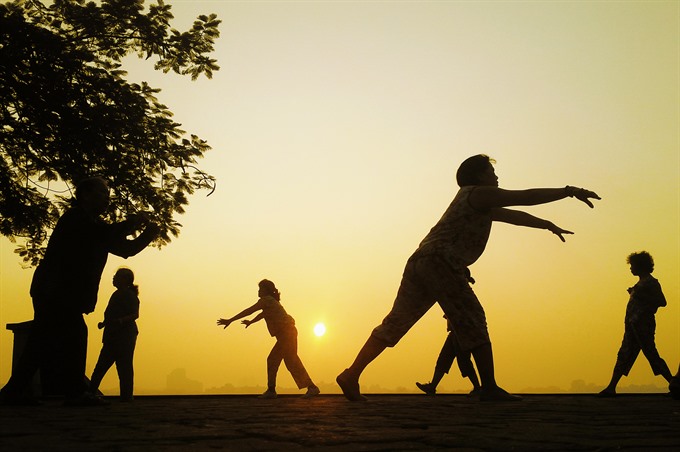 Sunday/Weekend
Sunday/Weekend

1. Nguyễn, Nguyễn everywhere
A staggering number of Vietnamese people have the same family name - Nguyễn (many Westerners pronounce this as Win to no complaints, so it’s a win-win situation).
According to the Họ và tên người Việt Nam (Family names and given names of Vietnamese), published by the Social Sciences Publishing House, Nguyễn is the family name of a whopping 38.4 per cent of the population. Others in top five last name ranking include Trần (12.1 per cent), Lê (9.5 per cent), Phạm (7 per cent) and Hoàng/Huỳnh (5.1 per cent).
Another Vietnamese naming characteristic is that the given name is put last. So the order is: family name, middle name (optional) and given name. So when they go abroad to countries where people address them with the family name, foreigners will be staggered by how large the family is, with Mr. & Ms. Nguyen here, there and everywhere.
2. From proper nouns to the proper pronoun
In English, a pronoun is mostly You or I.. In Vietnamese, how you refer to yourself in the first person or another in the second person depends on a whole host of factors. Age, relationship, social status and position are of paramount importance.
I, in Vietnamese can be tôi (the most popular, can be formal), ta (not formal), tao (superior to subordinate, familiar), tớ (to friends), mình (intimate), anh/chị (to younger people), em (to older people), cháu (to even older people), con (to parents and parents-in-law), and so on,
Calling the other You in Vietnamese is divided into to broad categories – female and male. A woman can be called bà, bác, cô, dì, mợ, chị or em, and a man can be called ông, bác, chú, cậu, anh or em depending on the relationship, ages and the position of the speaker.
For example, a lady who is/seems to be older than the speaker can be called cô or chị and younger people of both sexes can be called em. But watch out when you want to address a woman as bà or bác… They might not take too kindly to your guessing their age on the wrong side of what they’d like it to be.
3. Millions of millionaires
 |
Việt Nam is a land of millionaires (and billionaires). The official currency is the Đồng (VNĐ). If you exchange a US dollar, you should get around VNĐ22,500 in change. A hundred dollar note is equivalent to VNĐ2.25 million. So your journey to becoming a multi-millionaire begins before you are worth US$50.
So don’t bother to raise your eyebrows when flight tickets to HCM City from Hà Nội put you back a million or couple of millions of đồng. But narrowed eyes are advisable when you pick one of the polymer notes with several zeros in them.
The profusion of zeroes on banknotes here can confuse foreigners. The banknotes are VNĐ1,000-2,000-5,000 in paper, and VNĐ10,000-20,000-50,000-100,000-200,000-500,000 in polymer. While these are differently coloured and sized, the bluish similarity between VNĐ20,000 and VNĐ500,000 has led to several people using the latter thinking it was the former.
4. An extension of legs - Motorbikes
 |
Foreigners who visit Việt Nam for the first time are invariably startled by the sheer number of motorbikes and scooters on the roads here. The motto here is very simple. Have two wheels, will travel.
Vietnamese people use motorbikes for everything – to work, to school, to travel near and far, to carry their families and extended families, household appliances big and small, construction materials, etc. Even a distance of 500m will see a resident hop on his or her motorbike. Many street corners in major cities and provinces provide the xe ôm (motorbike taxi) and delivery services.
Latest statistics from the Department of Traffic Police show there are about 43 million motorbikes in the country, accounting for 93 per cent of all vehicles. This makes it 460 motorbikes for every 1,000 people in Việt Nam. So you can see why motorbikes can be seen coming from every direction, filtering through each other at every street corner, especially in big cities.
Besides being the most convenient way to travel in the country, visitors should be aware that motorbikes account for more than 70 per cent of total accidents on Vietnamese roads!
5. Neither nosy nor rude nor impolite
Niceties like remarking on the weather before plunging into a deeper conversation is not the Vietnamese way. The very first time a Vietnamese person meets you, she/he could well ask you your age, your marital status and even your income! Don’t be put off. First, your age and marital status can help decide how you are to be addressed (See Factoid 2). The question on age can also lead to an interesting discussion of your Vietnamese age and its implications. The nine months that you spent in your mother’s womb counts for a year in Việt Nam, so you are older than you think. And your year of birth also decides which zodiac animal you are, and what your dominant personality traits are. For example, if you were born in 1987, the Vietnamese will see you as 31 years old and that you are a zodiac Cat. And if they recount all that is great about being a cat, you might be purring soon. If the question about your income seems pesky, an evasive answer will get the message across. Not to worry.
6. Hooked to a hookah – bamboo pipe & fresh beet
 |
Just as the áo dài (traditional long dress) and nón lá (conical hat) have become iconic images attached to Vietnamese women, the men have their điếu cày (bamboo pipe) and bia hơi (the local draft beer), both ubiquitous all over the country.
The bamboo pipe is easy to find at the smallest of street tea shops in Hà Nội and with most families in the northern countryside. It is used to smoke thuốc lào, a wild tobacco with a high concentration of nicotine. Smokers take a deep pull with mouths closed over one end of the pipe, which emits a gurgling sound as the smoke is filtered through water. Then the men tilt their heads upward to release the smoke with the deep satisfaction of having got their fix. But smokers believe a thuốc lào drag helps facilitates their digestive process activities, and many use the dried thuốc lào (tobacco leaves) to staunch wounds. Even though there are mandatory health warnings and graphic pictures on cigarette packs and tobacco consumption is not encouraged, no particular regulation limits the thuốc lào.
On hot summer days, Vietnamese men let their hair down by pulling their shirts and t-shirts up, or take them off completely as they imbibe copious amounts of bia hơi, the popular draft beer with a three per cent alcohol content. The bia hơi is one of the cheapest drinks in the world and can be found everywhere in Việt Nam.
7. Morning exercises
 |
A recent study tracking people’s activity conducted by Stanford University has ranked Việt Nam among laziest countries in walking. According to the study, a Vietnamese citizen only takes a maximum of 3,600 steps a day, against the global average of 5,000. As elaborated in Factoid 4, motorbikes are virtual extensions of Vietnamese legs.
Luckily, another study shows that Việt Nam has among the lowest adult obesity rates. This might have something to do with the widespread practice of exercising early in the morning, with parks, streets, lakes and many other spaces taken by people engaging in myriad activities.
Anyone who is up early, even before the first rays of the sun put in their appearance, will be able to see people up and about with vigour. The elderly practice Tai Chi, young and not-so-young women gyrate, swing and thrust to aerobic music, and young men engage in parallel bar gymnastics and weights. The feather-cock game is a wonder to behold for its acrobatic moves. Gym and yoga centres have mushroomed in all cities, and are popular with the public.
8. Wired to the Wireless
Foreigners visiting Việt Nam are surprised to see how easy it is to get connected to Wi-Fi services. You can connect almost anywhere, in hotels, restaurants, coffee shops, even random tea shops on the street, where the stall owner will “borrow” a password from a nearby hot spot.
Several cities offered free Wi-Fi at famous tourist sites, and an increasing number of buses, vans and taxis offer the service. In many places the password is a sequence or repetition of numbers, 12345678 or 88888888, so if have the luxury of time, you can test some combinations.
9. Dating hubs
In the West and elsewhere, “Let’s get a drink”, invariably means a bar serving liquor, but in Việt Nam, it could well be a trendy café that serves Taiwanese bubble milk tea, Vietnamese coffee or trà chanh (sweet and sour limed tea), smoothies and fruit juices, yoghurt with coffee, and a wide variety of other drinks, that can be had in comfy ambience or taken-away to parks, lake banks and other public areas.
10. Đà Nẵng – A city with connections
Đà Nẵng, which hosts the APEC Summit this year, is known as “The City of Bridges”. There are as many as nine bridges spanning the poetic Hàn River – Thuận Phước, Hàn, Rồng (Dragon), Nguyễn Văn Trỗi, Trần Thị Lý, Tuyên Sơn, Hòa Xuân, Nguyễn Tri Phương and Cẩm Lệ, each one a landmark in its own right.
The Hàn Bridge is most identified with the central city, earning its fame as the only swing bridge in Việt Nam designed and built by Vietnamese workers. (More than a century ago, there was another “swing bridge” called Tam Bạc in Hải Phòng, but it has stopped swinging.)
The middle part of the cable-stayed bridge will swing at a right angle, parallel with the river, between 1-2am, allowing big ships to go through. Each swing takes 15-20 minutes. After 4 hours, the bridge will return to its stationary form.
Many residents of Đà Nẵng will proudly tell you that if you haven’t waited and watched the Hàn Bridge swing, you haven’t completed your visit to the city. — VNS




